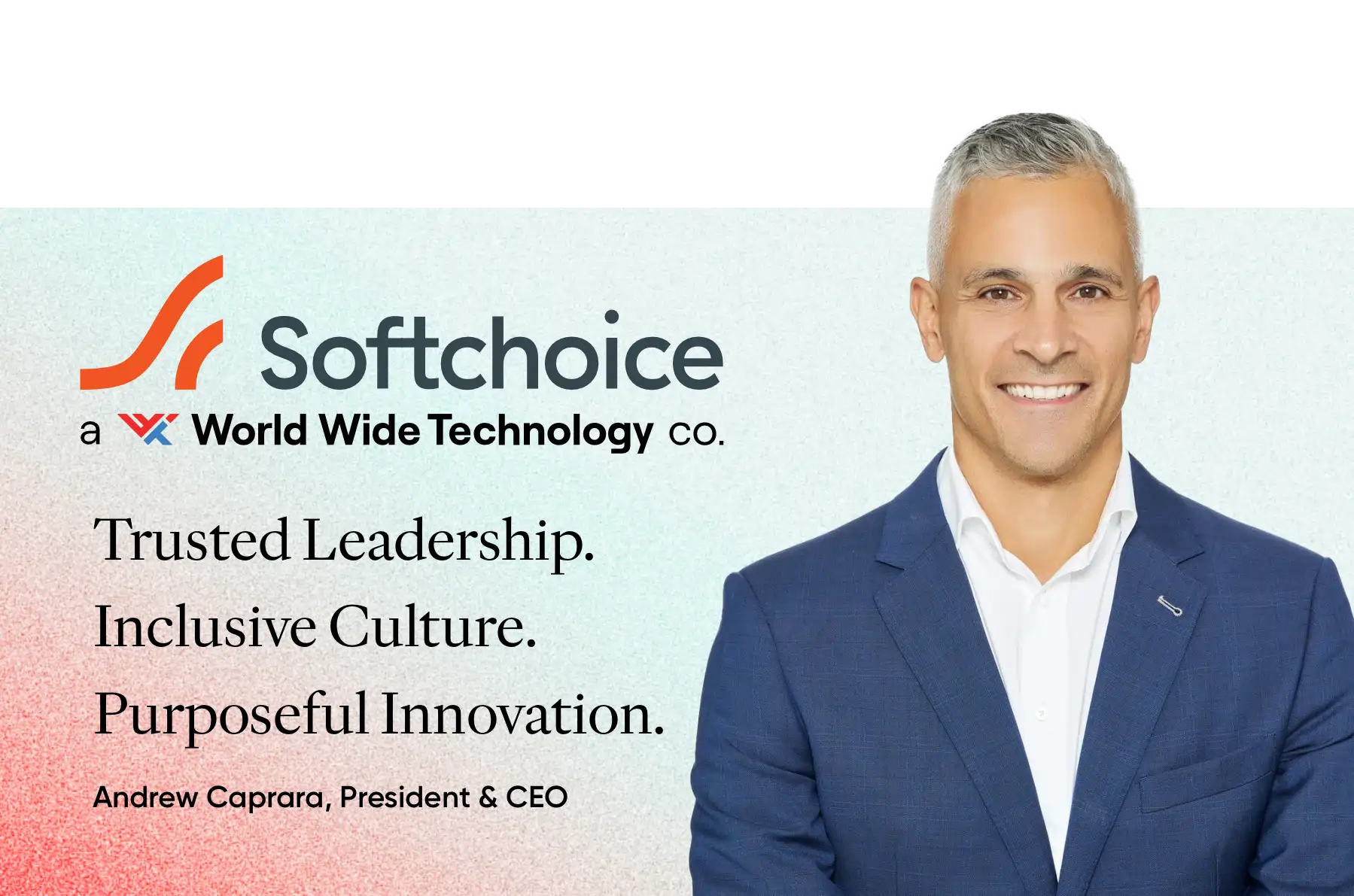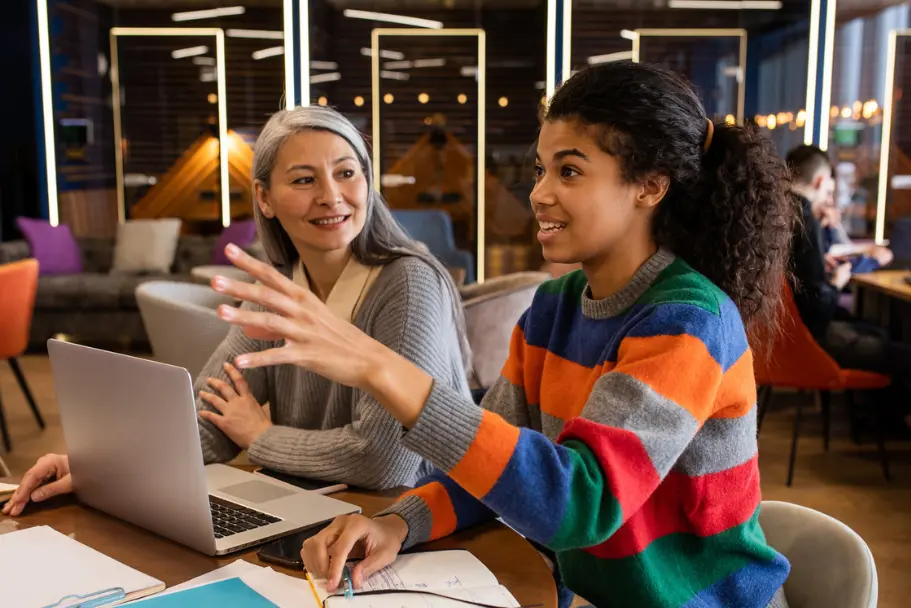
Many Canadian organizations have four generations working together – Boomers, Gen X, Millennials and now Gen Z. Each generation has a unique set of preferences and perspectives from what to wear, to how to talk to one another, and even where best to do one’s work. This multigeneration workforce is a uniquely modern challenge that is best approached with patience, understanding and inclusivity at the core. Not surprising, these are keys to making workplaces great for all period!
What is a multigenerational workforce?
A multigenerational workforce is one in which the employees span different generations. There are four main generations in the workforce right now and some workplaces may even have some members of the silent generation still working in their late 70s and early 80s. This means an employer today could easily have young graduates working side-by-side with great-grandparents.
- Boomers are the old guard. They’ve seen huge changes over their careers and change may or may not be something they take well to.
- Gen X consider themselves the last of the hardy-stock. They are used to doing what it takes to get work done and expect that same work ethic from others.
- Milllennials are sandwiched in the middle. They are the brunt of many GenX jokes about entitlement and they are often stretched thin trying to balance work and family life with young children.
- And now Gen Z has reached the workforce with their tech-savvy enthusiasm and exuberance of youth wanting to make their mark on the workforces of tomorrow.
Keeping all these competing needs and interests satisfied while creating a strong and unified team is no easy task. Those that do well, benefit from the wide range of talents, skills, experience and perspective that all of their people bring to the table. With more generations than ever working side by side, employers are positioned to create strong, innovative teams rich with diverse thought, experience, and expertise.
At the Best Workplaces for Today’s Youth, they understand that managing multiple generations is a challenge and they are focussed on bringing out the best in their Gen Zs while ensuring all of their people feel included and respected as important members of the team. In fact, 95% of workers at these Best Workplaces feel they are treated fairly regardless of their age, and 93% feel they are treated as full members of the team regardless of their position. Key to endorsements like this, is their organization’s commitment to viewing everyone as an individual and understanding the value that each person brings to the team regardless of their age or experience.
For managers of multigenerational workforces, engaging all generations is essential — not just for employee satisfaction but also for the company’s overall success. We know diverse and inclusive workplaces have higher employee retention, higher revenue growth, and a greater readiness to innovate. Age diversity is a large part of this equation that comes with its own unique set of challenges. Here are some the key ones to be aware of.
Multigenerational Workforce Challenges
Differing Priorities and Values
Workplaces are not only generationally-diverse, they are becoming more ethnically and racially diverse. This means the range of priorities, expectations, and experiences that employees bring to the workplace is wider than ever. When your employees range in age from 18 to 80, it’s important to recognize that different age groups have different priorities. For millennials it may be child care, Gen Z may be trying to save for a home, and the older generations may be looking for more more personal time or extended time off.
Generations may have different priorities when it comes to values as well – purposefulness, job security, and community involvement are other ways that priorities may differ. The key is recognizing that one set of priorities isn’t better than another. Check in regularly with employees about work and life. Learning about what is happening in each employee’s life will not only create trust in the workplace, but also make it easier to offer benefits that specifically suit them, rather than simply being a blanket program or perk for their generation. By respecting what colleagues need and by being flexible, everyone can get their needs met.
Stereotypes and Assumptions
Just as we should never stereotype based on race, ethnicity, gender, or sexual orientation, we shouldn’t stereotype based on age and generation. Not all Gen Xers are gunning for the C suite and willing to do whatever it takes to get there, and not all Gen Z are content to work part time waiting for their next social media post to go viral. The key here is to get to know people as individuals and help them achieve their goals. If your 48-year-old accountant wants to work remotely from Costa Rica in the winter, work with them to create a schedule that works. If the 25-year-old new-hire in customer service tells you they intend to take your job one day, create a training plan that puts them on that trajectory.
People need to break out of stereotypical thinking by getting to know people as people, and not as members of a particular group. Encourage open and honest conversations in the workplace about age stereotypes. Create opportunities for employees to collaborate and socialize across the generations and beyond their usual team or social circle. When you recognize that one size does not fit all, you will get better at figuring out specifically what your people want and need.
Miscommunication
Technology has changed how we communicate but the benefits in terms of convenience have opened up pitfalls in terms of understanding. Take texting, it’s quick and easy but it has a language of its own that not all generations understand. From emojis to acronyms to using a period or not, the unwritten rules and expectations can create a lot of misunderstanding. Tone has always been hard to master in written communication and now with so many options it’s easy to see how miscommunication happens. When one person’s WTF means ‘Well That’s Fantastic’ you can imagine how quickly that group text could go off the rails!
Phone calls are a nuisance to some and others pick up the phone even for the quickest of interactions. Zoom meetings are not easy for everyone to master – there are so many menus and options! But setting rigid rules around how to communicate with who and when creates a lot of unnecessary resentment. Language evolves, and it’s easy for employees from different backgrounds or age groups to have vastly different interpretations of a message. Ensure that everyone understands different communication styles and how they can be misinterpreted.
Here again, being flexible and inclusive, having lots of options available, and being open to learning what others need goes a long way toward making multigenerational work, work.
Knowledge Transfer
The younger generations need to learn from those who have been around for a while. Likewise, those who have been around for a while, need to be open to new ideas and new ways of getting things done. Helping the generations become comfortable talking to one another openly and candidly can be difficult. New employees often feel intimidated by the old guard and older colleagues tend to be dismissive of younger people. Again, stereotypes that need to be challenged and corrected!
Remembering that the young workers today will be the leaders in a decade or so helps people better appreciate the importance of information-sharing across all departments, levels and ages. People need to feel like their thoughts matter and that they can ask questions and expect an honest answer. Pay attention to meeting dynamics and explore multiple feedback channels to ensure as many voices are heard as possible. Find ways to help each generation thrive in the areas they already know, as well as to learn new skills from the generations before and after. Develop a mentorship program where more senior employees can nurture and guide their younger coworkers. This two-way exchange not only gives younger generations the feedback they crave, but it also helps people connect and see past pre-conceived differences.
Engaging your multigenerational workforce while also recognizing that, more often than not, people don’t fit neatly into a generational stereotype, means that inclusive practices are absolutely essential. It also means leveraging each generation’s unique set of skills, perspectives and experiences to elevate your team’s overall capability. And then knowing how to communicate and keep people engaged helps bring it all together. Ultimately, while multigenerational trends will continue to drive workplace programs like recruitment and retention strategies, your top priority should always be to engage each person as a unique individual fully.
If you’re not already using the Great Place to Work survey, reach out to us to learn about how we can help you develop inclusive practices for All of the people in your multigenerational workplace.







